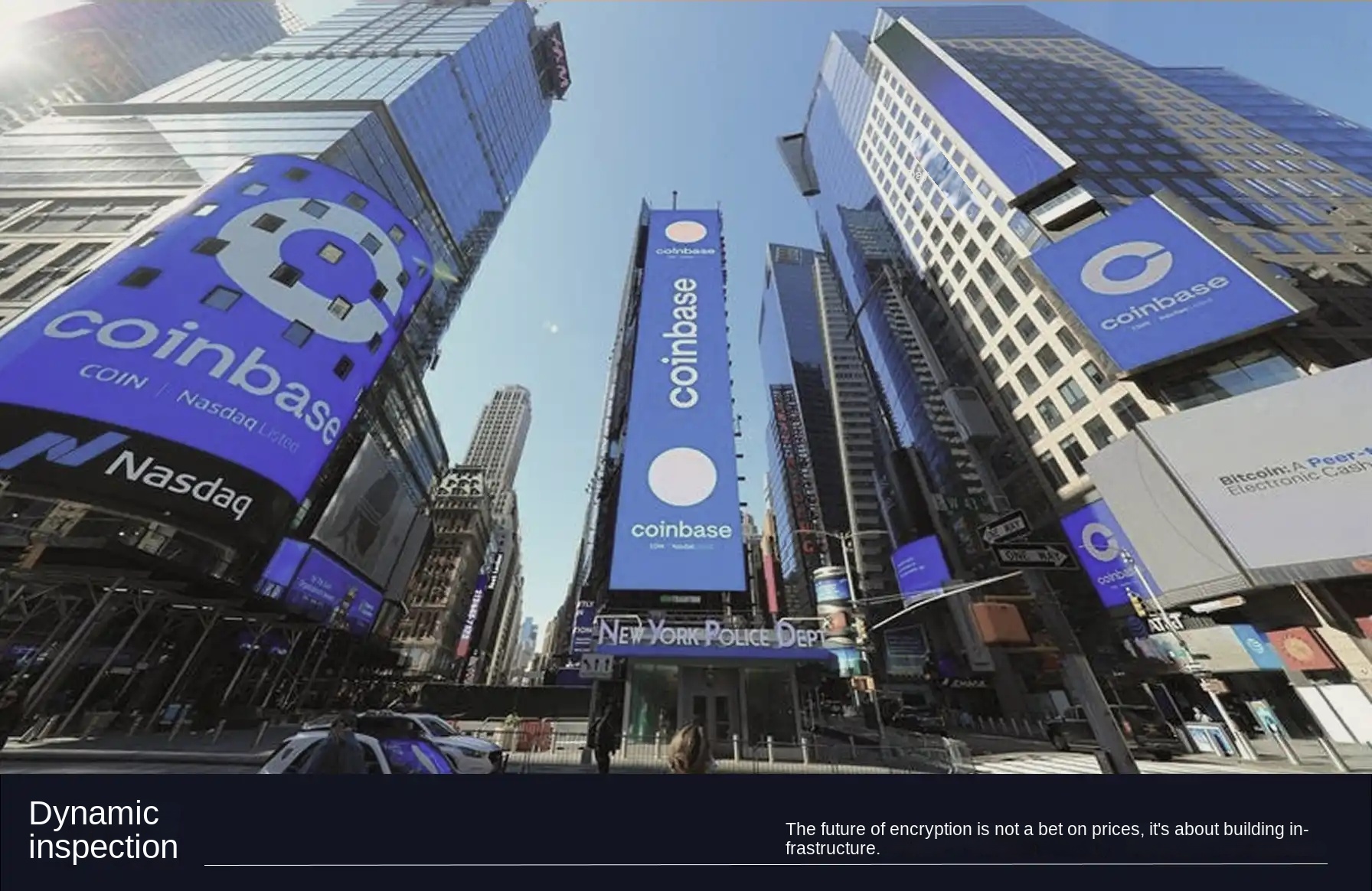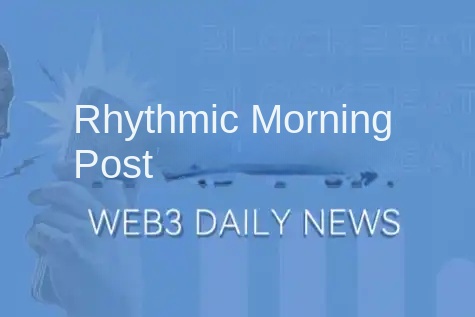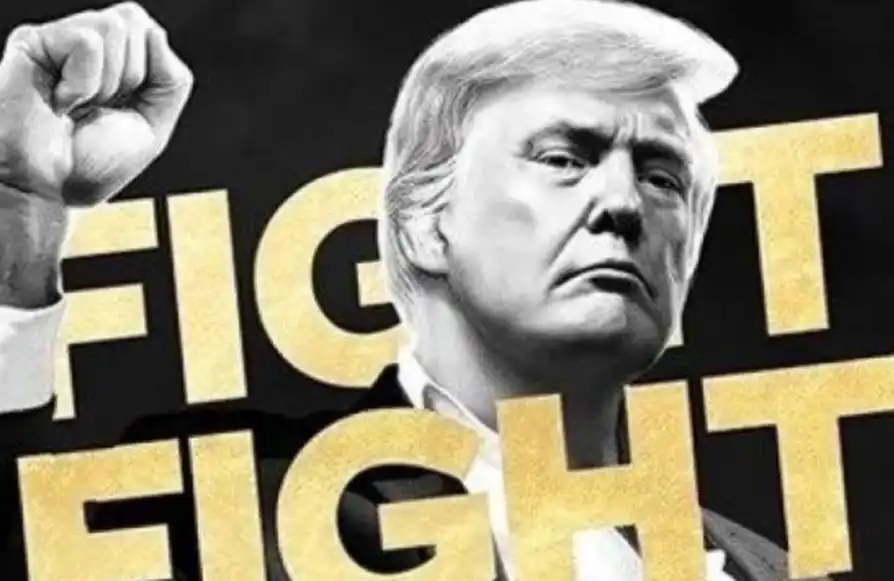Interview with Dr. Dong Mo of Celer: How Brevis "opens the eyes" for smart contracts
When it comes to Celer, many people first think of its star cross-chain bridge product cBridge. After the development trend of multi-chain ecology gradually becomes apparent, cross-chain has become the direction of many teams to start businesses. Although security issues frequently occur across the entire cross-chain track, cBridge has not had any security breaches since its launch in 2021. Now that the leading position in the cross-chain field is solid, Celer also released its latest ZK research and development results - Brevis in March.
Brevis, which focuses on ZK technology, came at the right time. After the Arbitrum airdrop became popular, many ZK ecological star projects are also ready to go. This year, many ZK leaders such as zkSync and StarkNet have also announced the launch of the mainnet. Released its own "ZK New Product" in the "ZK First Year", is it a signal for Celer to shift its development direction? Why did the team choose ZK technology? What mission does Brevis carry?
Aiming at these issues, BlockBeats conducted an in-depth interview with Dr. Dong Mo, Celer Lianchuang, during his participation in the Hong Kong Web3 Festival.

Dr. Dong Mo gave a speech at the Web3 Festival, the image source is from Celer
A heroic explorer in a new field
< p>From the State Guardian Network (SGN) in the state channel field to the cBridge in the cross-chain bridge field, to the recently released Brevis, Celer can always bring innovative and reliable products to new ecology or new fields. But from the outside world, this seems to be the performance of the Celer team frequently switching tracks. What exactly is the Celer team like? What is your position in the industry?
BlockBeats: Some readers may not be very familiar with Celer and Dr. Dong Mo, please give a brief self-introduction first.
Dong Mo: I started a company with my tutor when I was studying PHD at UIUC, and the main direction was network security. The company is acquired by VMware. My own PHD research topics have always been distributed systems, network systems and other related fields, which is why I saw blockchain technology very early.
After graduating from PHD, I often participated in various lectures in the Bay Area, and often chatted with my friends about blockchain, including several current Celer founding member. We all think that blockchain is a very good opportunity, and we are all very interested, because we all study distributed systems and come from the same school. Later, everyone decided to start working on Celer. At the beginning, it was mainly to expand the capacity of the second layer. At that time, there were many technical directions for capacity expansion. One was to establish a faster public chain or side chain, and the other was a two-layer solution.
At that time, the second-layer solution was to build a new thing on the basis of the Bitcoin Lightning Network. Because the Bitcoin lightning network can only be used for payment, while Ethereum has a state channel network, which is what Celer was doing at the beginning, through the state channel network to improve the performance of Ethereum. The state channel we made is also the world's first generalized state channel network. This is the original intention of Celer: hope that by improving the performance of Ethereum, more people can touch and use the blockchain.
BlockBeats: Why did Celer abandon the development of the state channel direction?
Dong Mo: One of the reasons is that its development threshold is relatively high, and existing smart contracts need to be rewritten. We can actually say that we have "heroically explored" the road of state channels, and it has not yet matured. When will the state channel be "Great Again"? It is when many traditional payment scenarios actually appear on the blockchain. Because it is impossible to generate Gas for every payment in traditional payment, and even the second-layer solution is not cheap enough, but the payment experience that the state channel network can bring to you is the most extreme and the lowest cost. As far as the current state of the industry is concerned, we think it is still too early to make a state channel, but we are still full of confidence in the future application of the state channel.
In our state channel architecture, there is a technology stack called "State Guardian Network-SGN", which is responsible for safely centralizing the data under the chain to the chain, and to relay information between chains. After we saw the multi-chain development trend in the industry in 2021, we immediately realized that our previous research was obviously applicable in this field, so we decisively chose the new development direction of cross-chain.
Open "Sky Eyes" for smart contracts
"Celer has turned to ZK", when you ask friends around you, everyone knows the latest development direction of Celer. But it is not very clear about why Celer adopts ZK and what Brevis does. But in fact, hidden behind the complex technical concepts and awkward component names is a huge industry gap and business opportunities.
BlockBeats: Why did the Celer team launch Brevis? What problem does it solve?
Dong Mo: Nowadays, regardless of market share or cooperation Partner, Celer has done a very good job in the cross-chain field. Today, users will find a "Bridge" function after opening the MetaMask wallet, and Celer is another major cross-chain partner besides Connext and Hop, directly accessing the traffic of MetaMask, which also indirectly proves that Celer is in Success in the cross-chain field. In addition, in addition to more than 40 public chains supported by Celer, the famous Japanese public chain Astar, Oasys supported by Japan's largest game companies such as SEGA and SquareEnix, and the Metaverse World side chain of the Korean game company Netmarble have all chosen Celer cBridge as their official chain. At the same time, Celer's ecological developers have used Celer to develop nearly a hundred cross-chain applications in various fields such as Metaverse, NFT, DeFi, and Governance.
In the process of deepening the cross-chain field, we have also conducted very in-depth exchanges with many multi-chain application teams. We found that pure message/asset cross-chain cannot meet their needs. For now, message/asset cross-chain is still an active process, which means that an application immediately generates a new message on the chain and needs to send it to other chains. But if some application wants to read and use any information on the chain at any time, it will not work. (BlockBeats note, for more information on the principle of cross-chain, please read "When you are cross-chain, are assets really transferred? ")
For example, when a DeFi application allocates its DEX liquidity pool across chains, it needs to analyze the relevant historical data of each chain to Decided to allocate incentives. But at present, everyone can only put the data seen by the "human eyes" off the chain back on the chain through regular governance. But from the beginning to the end, the smart contract is a "blind man". It has no way to see the past data on its own chain, nor can it see the private data in other chains or contracts, so it cannot calculate and verify these data. and exploit. So we invested a lot of time and energy to develop a ZK-based full-chain data verification computing platform, Brevis, to open the "eyes of the sky" for these smart contracts.
This is the problem Brevis wants to solve: to allow smart contracts on the chain to obtain, calculate, and use all data on all chains without trusting any third party .
BlockBeats: Regarding on-chain data indexing and analysis, Dune or Nansen already have relatively mature products. How is Brevis different from them?
Dong Mo: This is a question many people have. In fact, the data made by Dune and Nansen is for people to see, not for smart contracts. Dune and Nansen dug out the data from RPC and summarized it on a chart for people to read. This data for people to see requires you to fully trust this RPC, that is, to trust a centralized third party.
But to make the data for the smart contract to see, you need to "stuff back" the data on the Dune or Nansen chart into the smart contract. There is a very simple question here: who has the final say on the authenticity of the "stuffed back" data? At present, there is still no trustless method under the chain to prove the authenticity of the data, which is a big "Missing Piece". Let the smart contract have its own "Nansen", so that the existing application can truly become a data-driven Co-Processor application on the chain. This is the most different thing about Brevis.
BlockBeats: Can you briefly introduce the role of the three main components in Brevis, zkFabric, zkQueryNet, and zkAggregator Rollup?
Dong Mo: zkFabric Mainly help the entire Brevis collect from all linked blockchains Block Header, and its aggregators and sharers in each chain. After proving its validity through the ZK light client circuit, a consensus proof is generated. This component is critical for dApps to access the Block Header and the state of the blockchain in a trustless manner. We can understand the role of Fabric in this way. For example, if 10 chains are connected to Brevis, these 10 chains can communicate with each other, not only message data, but all historical data. But we still need something to prove that the Block Headers of these 10 chains are correct. zkFabric has such a prover network to prove, relay and store all Brevis-supported chains, providing a complete historical summary for these chains.
zkQueryNet is an open market that provides a ZK query engine. It is based on the summary of zkFabric and can expand any data. It can directly accept the data query requirements of smart contracts, and generate query results and ZK query proofs through the ZK query engine circuit. Equivalent to an Index above Dune. You can think of the smart contract on the chain as a user who uses Dune. He can directly use Dune without anyone telling him what the result of Dune is, and directly create his own query. The form of Query can be an API, or a very general Query language. Users can check the subsequent status by writing a SQL or a Graph. This is what Brevis's zkQueryNet is currently doing.
zkAggregator Rollup is an aggregation layer, which is equivalent to the proven Block Header in zkFabric and the proven Query in zkQueryNet get together. zkAggregator Rollup is a very special Rollup that verifies proofs from the above two components and submits their ZK proof state roots to all connected blockchains to allow applications to directly access proof query results in their own smart contracts . For example, now there are three people who are sending messages to each other. In order to synchronize the messages, each person has to relay his Block Header to the other two, and finally sends 6 messages. The function of zkAggregator Rollup is that three people each send a message to it, and it sends another message to us, which is equivalent to a repeater.

Brevis technical structure diagram, source from Celer
ZkFabric, zkQueryNet and zkAggregator Rollup all require ZKP components. zkFabric is used to prove whether the Block Header is correct, and zkQueryNet is used to prove whether the data analysis result is correct. And if zkAggregator Rollup is simply understood as a Recursion, its logic is to "prove all the proofs". The proof process itself is also being zkProve, which can be superimposed layer by layer. (BlockBeats note, for more information about Brevis’ technical principles, please read Interpretation of Celer’s ZK full-chain data calculation and verification platform Brevis")
The "Missing Piece" that allows DEX to quickly surpass CEX
< /p>
After understanding the specific structure of Brevis, the next question is what can it do?
BlockBeats: You just mentioned the use case of Brevis in the DEX field, can you further explain why DEX needs to "ZKize" historical data?
Dong Mo:In fact, the current DEX is not completely decentralized, and many links still rely on manual management, which will cost a lot time. For example, an application on the chain wants to adjust its liquidity pool and incentive threshold based on the transaction data on the chain. Currently, there is no way to get rid of artificial governance.
For another example, an important difference between DEX and CEX is that DEX does not have a VIP grading system. If a VIP user wants to reduce their transaction fees, DEX must be managed through Governance governance, and even if fees can be reduced through Governance, it is not ideal in terms of timeliness. What's more, as a trader, the time point for each person to reach a transaction volume of, for example, 1 million US dollars is different. DEX wants to achieve the effect of "7 days of reduced transaction fees when the transaction volume reaches 1 million US dollars". It cannot be realized without zkQuery based on the historical data of the whole chain.
But is there such demand in the market? The answer is not only yes, but a lot. So we need such a technology to help smart contracts arbitrarily obtain the past, present, and future data of the entire chain, and then do calculations based on these data.
Professional market makers, transaction discounts, and user VIP grading systems are commonly used mechanisms in centralized platforms, which can make the DEX ecology healthier The important factor is that DEX could not do these things in the past, but now we can help them realize it. For example, if a user has used Uniswap on Polygon, BNB, and Ethereum, Brevis can help Uniswap calculate the total transaction volume of the user in any time period on each chain in a completely decentralized manner.
BlockBeats: In addition to this data-driven DeFi, do you think Brevis has any strong application scenarios in the short to medium term?
Dong Mo: There is another big application scenario, which is the identification of identity (DID) on the chain. For example, although I have not interacted on the BNB chain, I have to prove that I am an old user of Ethereum, and even participated in the governance of The DAO for 17 years, and then through this proof, I can use it in the application of the BNB chain. Get new rights or airdrops. In other words, I can put a lot of tags on the chain for myself, so that the application can see the past data and prove my identity. In fact, the biggest role of this piece is to prevent Sybil attacks.
BlockBeats: Can the anti-sybil attack you mentioned be combined with the current upsurge of airdrops?
Dong Mo: Yes, there will always be airdrops, and there will be more and more in the future. For the airdrop, Brevis can give users an airdrop "talisman", that is, those who participate in the airdrop must first obtain certification from Brevis. We don't need to know who you are, but we can prove that you are a big player or OG through the chain.
Because the real "old address" cannot be pretended, all past interactions on the chain cannot be faked, such as when an address Historical data shows that it has been attacked by MEV 5 times, so how can he still be a robot? For another example, if you used to be a holder of Crypto Punk, then as an old user who once supported the ecology, you should also get the corresponding Reward.
“Brevis is not a product, but a platform”
Finally, we also have ZK Dr. Dong Mo was asked for answers to the current status of technology development, the current and future development focus of Brevis, and the economic model of Brevis.
BlockBeats: This year, many ZK ecological projects will be launched on the main network one after another. But before Arbitrum founder Ed Felten once said: ZK is the solution of the future, and it will always be the solution of the future. What do you think about this point of view? Is ZK technology really mature?
Dong Mo: Celer has been working on ZK technology products for a long time, but we thought it was not a good time at that time, mainly because Because the entire ZK developer ecosystem and developer tool chain are still very early, we also want to wait for this ecosystem to become more mature. But since the end of last year, ZK ecology has probably reached the so-called turning point. This turning point is mainly due to the rapid improvement of ZK's development framework and basic performance, so that we can build better. In fact, ZK technology is relatively Ready now, but it is still very young. For example, auditing, there are basically few teams that can audit ZK. However, the actual situation of ZK ecology is not as pessimistic as Ed said.
BlockBeats: What is the main development work of Brevis now?
Dong Mo: What we need to do now is to enrich the ZK Query Engine. For example, the Query Engine of zkDID and the Query Engine of DeFi Trading that I just mentioned. We are not only going to make a few Engines, but also make a set of SDKs that will allow developers to develop new ZK Query Engines better and more conveniently according to their needs.
In fact, the zkDID, data-driven DeFi, etc. I just mentioned are some application scenarios that we can think of, but we believe in the community and developers Surely one could think of something more exciting than that. So Brevis is not a separate product, but a platform that allows developers to continuously Plug In new things and Query what they want, without being limited by our presets. This is what we hope to do.
BlockBeats: Will Brevis adopt a new economic model?
Dong Mo: Our main energy is now focused on technology, at least we must first make the whole tool suite look like Come out, it is still uncertain what Brevis's economic model looks like now.
Welcome to join the official BlockBeats community:
Telegram Subscription Group: https://t.me/theblockbeats
Telegram Discussion Group: https://t.me/BlockBeats_App
Official Twitter Account: https://twitter.com/BlockBeatsAsia


 Forum
Forum Finance
Finance
 Specials
Specials
 On-chain Eco
On-chain Eco
 Entry
Entry
 Podcasts
Podcasts
 Activities
Activities
 OPRR
OPRR







